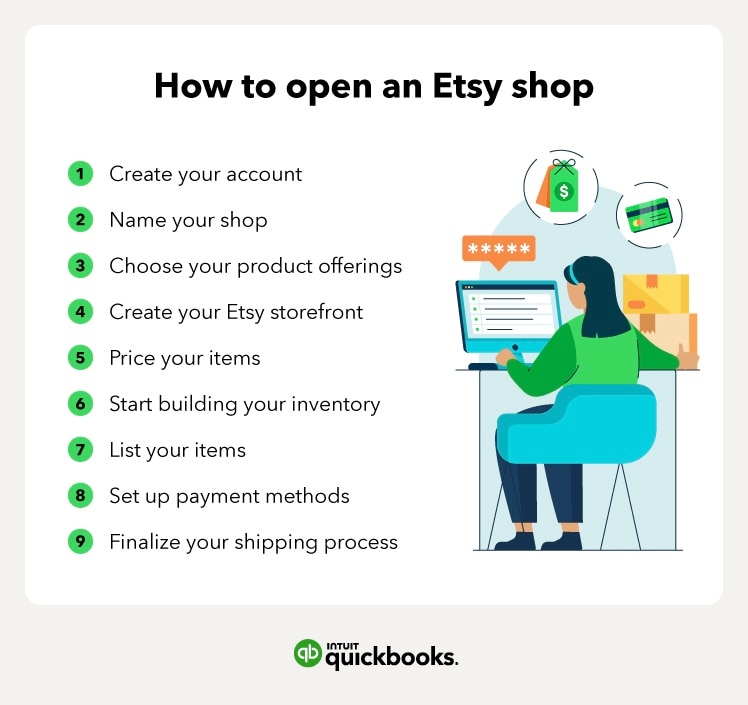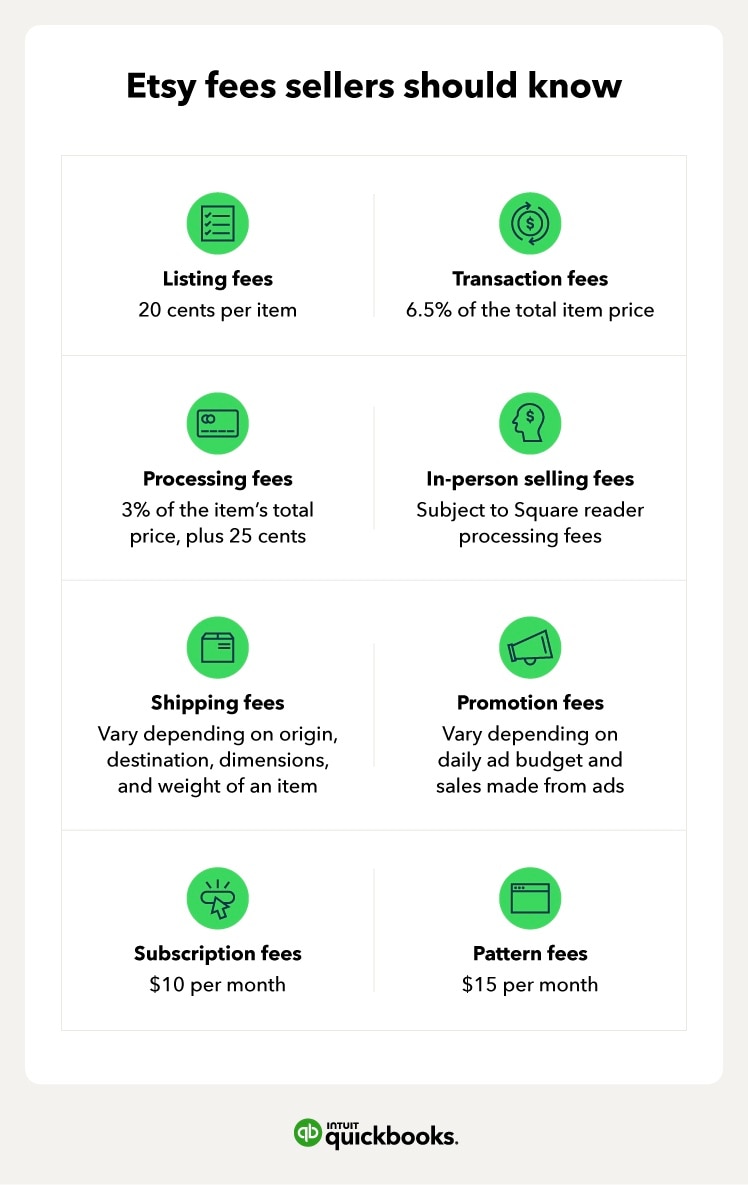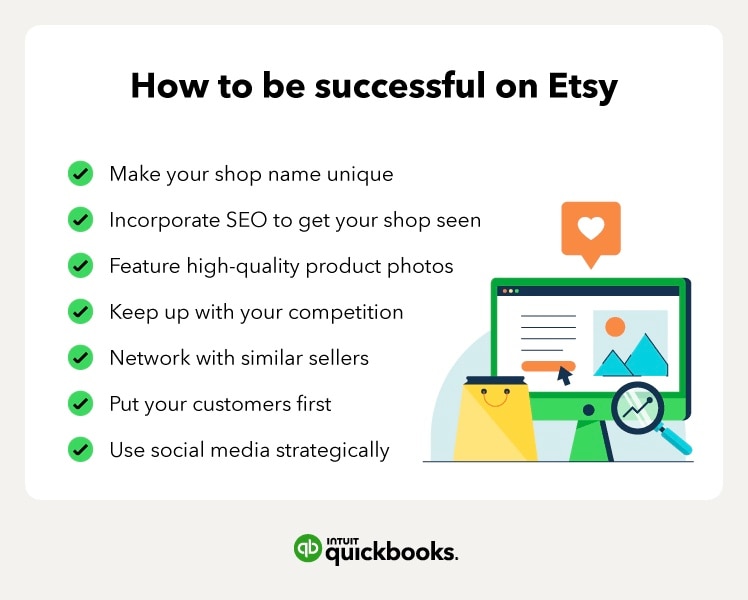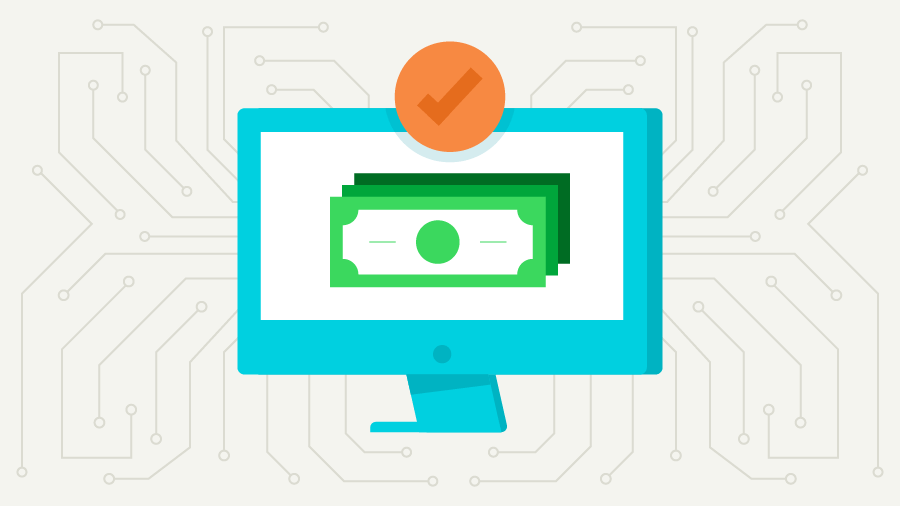Listing fees
To post your products on the site, Etsy charges a 20-cent listing fee per item. The product listing fee allows you to have your product on the site for four months. You can auto-renew the listing for another 20 cents if your item doesn’t sell in that time.
Transaction fees
Essentially, these are commission payments made to Etsy for the use of their online marketplace. Currently, Etsy charges 6.5% of the total item price, including any wrapping or shipping costs to the customer.
Payment processing fees
Etsy charges a fee if a customer pays using Etsy Payments. Etsy Payments allows sellers to accept many different payment methods—like major debit and credit cards, Etsy gift cards, Etsy coupons, PayPal, Apple Pay, Google Pay, and some bank transfer services. In the US, this fee is 3% of the item’s total price, plus 25 cents. This will vary based on the location of your bank account.
Shipping fees
Etsy offers sellers the option to purchase shipping labels to make it easy to fulfill orders. It charges a shipping label fee for USPS, FedEx, and Canada Post shipping labels. The shipping label fees depend on each package’s origin, destination, weight, and dimensions.
Shipping fees are important to keep in mind when setting prices and shipping policies. Outline your payment and shipping policies on your shop’s homepage to include:
- Accepted payment forms
- Shipping times and costs
- Refund and exchange policies
- Customer and duty fees for international purchases
In-person selling fees
Sellers can use the Square reader to process in-person sales by syncing their Etsy listings with Square. If you sell in person using Square and your listings are not synced, you are charged a 20-cent fee per transaction.
Square also charges additional processing fees depending on the type of transaction. Any transactions made through the Square reader are not subject to Etsy’s 6.5% transaction fee and payment processing fees but are subject to Square’s processing fees.























